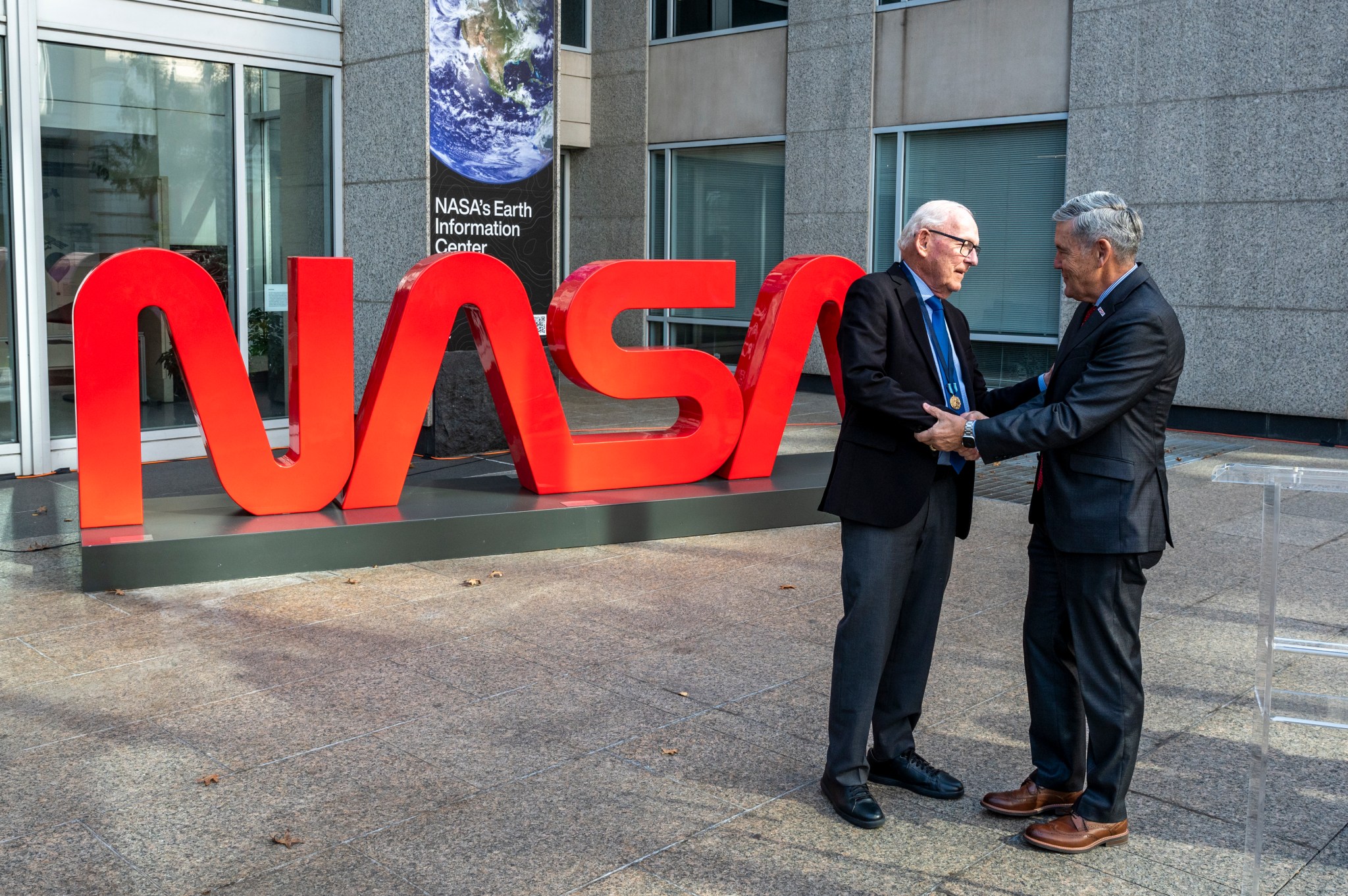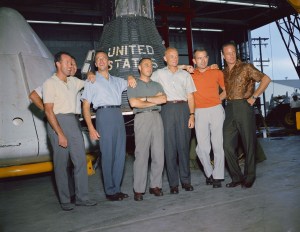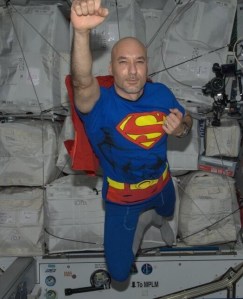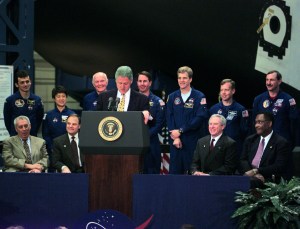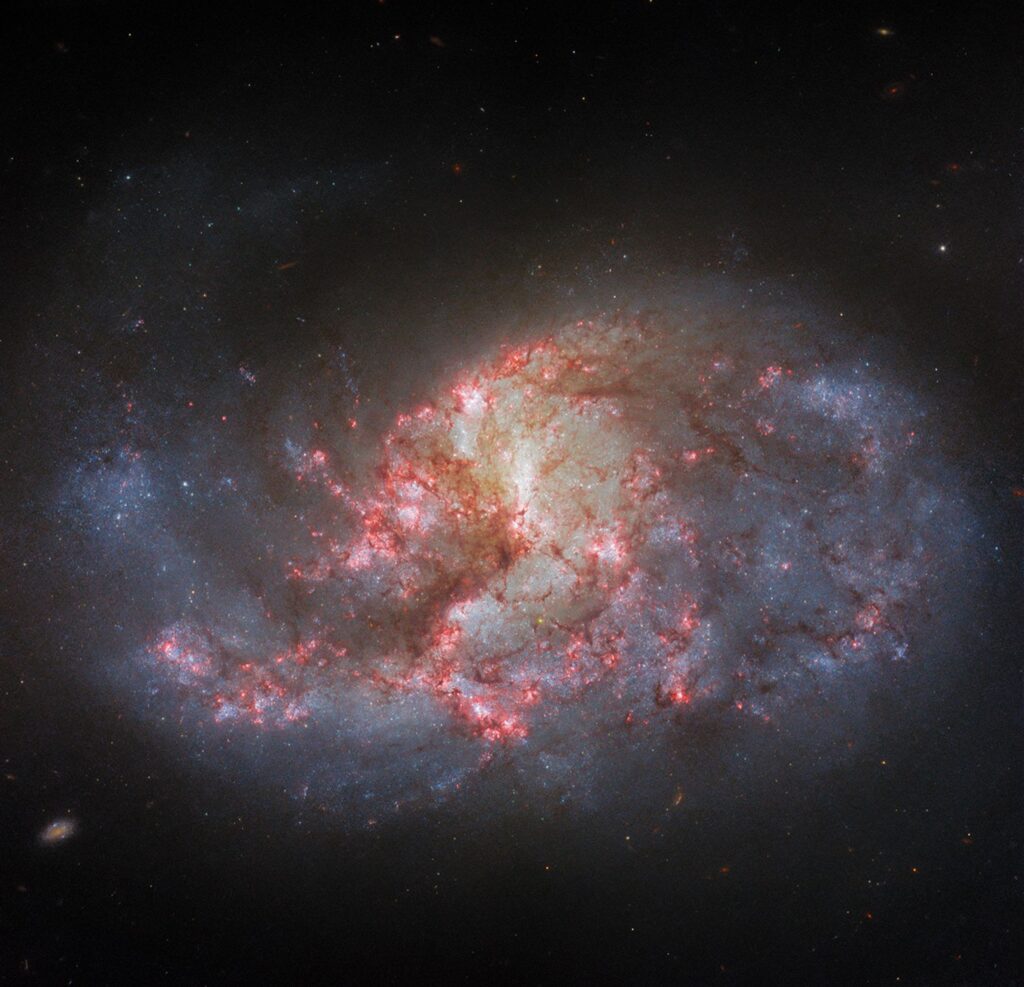4 min read
Worm Designer Receives NASA’s Exceptional Public Achievement Medal
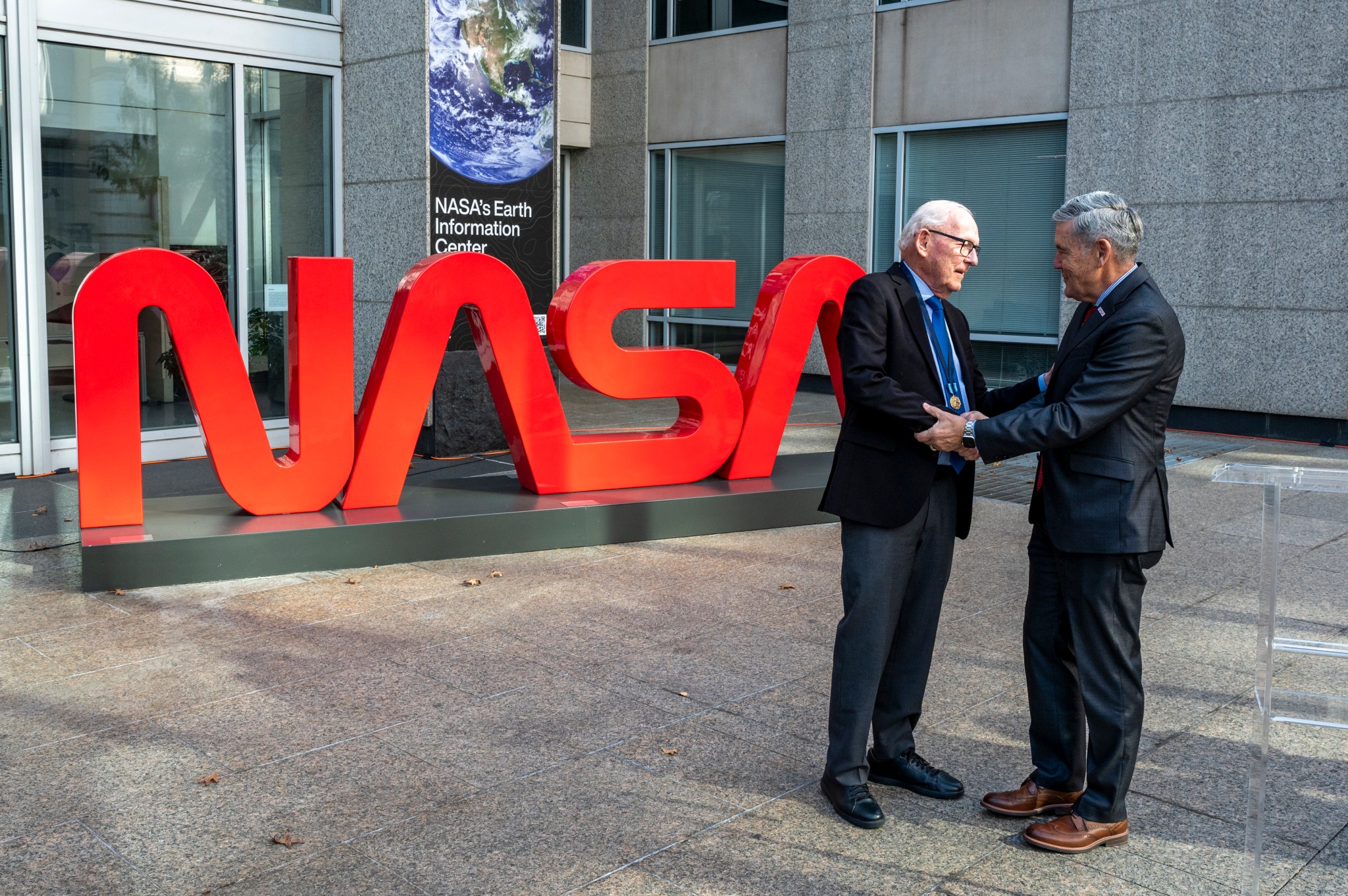
NASA Associate Administrator Bob Cabana presented an award to Richard Danne Monday for his outstanding achievement in creating the NASA worm logotype and inspiring the world through the medium of design for the benefit of humanity.
The Exceptional Public Achievement Medal was presented to Danne following a panel discussion at NASA Headquarters in Washington featuring the designer, as well as NASA and industry design experts, discussing the iconic logotype and its cultural influence. The award is given to non-government employees for specific achievement or substantial improvement in contribution to the mission of NASA.
“Making the impossible possible through innovation, inspiring through discoveries that transform our knowledge of the universe and our place in it, and providing benefits to all of humanity are what we do at NASA, and what people think of when they see this simple yet striking logo,” said NASA Associate Administrator Bob Cabana. “Thank you for giving the agency an image that fit the time and also that continues to endure alongside the iconic NASA meatball as one of the most recognizable and popular symbols of what we can achieve when we work together.”
A simple, red unique type style of the word NASA, the worm replaced the agency’s logo for several decades beginning in the 1970s before it was retired. It has since been brought back for limited use to complement the agency’s official insignia, known as the meatball.
“This event, a culmination of a 50-year trek, is extremely rewarding. Creating the worm for NASA has been a singular achievement in my own career and in the history of design. It has not always been easy but it was a glorious experience and I feel fortunate to be part of the NASA family and to have helped the agency achieve its missions and goals,” said Danne.
NASA was strategically chosen to implement the first new brand identity as part of the Federal Design Improvement Program. The agency hired the New York firm, Danne & Blackburn, who delivered their visionary worm design accompanied by a detailed manual that made it accessible across all centers. At the time, the worm won some of industries biggest design awards, including the first Presidential Design Award in 1985.
In 1992, the worm was retired. However, in 2017 NASA began permitting the worm once again on souvenir merchandise and in 2020, almost 30 years later, the agency used the worm logo once again to mark the return of human spaceflight on American rockets from American soil. In November 2022, NASA also used the worm logo on its first rocket around the Moon in more than 50 years as part of its Artemis program.
Since its launch, the worm logotype has resurfaced on signage, spacecraft, and spacesuits for the agency. Most recently, NASA opened its Earth Information Center at its headquarters, featuring a giant NASA worm sculpture directly outside its front doors. As part of his visit to Washington, Danne saw the sculpture for the first time.
The original NASA insignia, designed by James Modarelli in 1958, remains a powerful global symbol, and is the official logo as the agency innovates, inspires, and explores for the benefit of all. NASA’s merchandise team receives hundreds of requests every month for permission to use its graphics.
“Thanks to the worm and the meatball, NASA’s brand is one of the most recognizable in the world. These symbols have inspired countless students in the past, and now inspire the future generation of engineers, scientists, and innovators – the Artemis Generation,” said Marc Etkind, associate administrator, Office of Communications at NASA Headquarters.
To rewatch the panel discussion, visit NASA’s YouTube channel at:
-end-
News Media Contacts:
Claire O’Shea / Stephanie Schierholz
Headquarters, Washington
202-358-1600
claire.a.oshea@nasa.gov / stephanie.schierholz@nasa.gov
